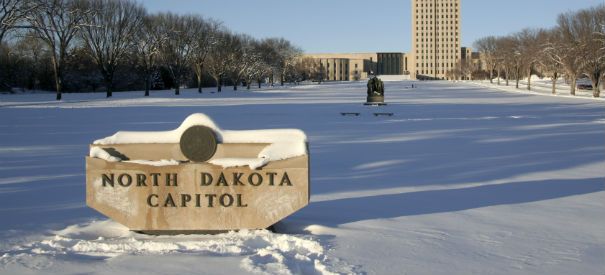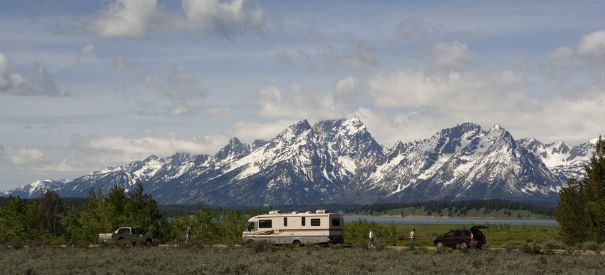According to Project on Student Debt, run by the independent, nonprofit organization The Institute for College Access & Success (TICAS), in 2014, nearly 70 percent of seniors who graduated from public and nonprofit colleges had student loan debt averaging at $28,950 per borrower.
Yet experts can't seem to agree on student loans. Should they be categorized with good debt — outlays likely to return more than you invest, like mortgages tend to be — or should they be on par with a maxed-out credit card?
Our data department took a close look at some student debt statistics compiled over the last few years, and their findings suggest as others have before that the issue may not be so easy to characterize as universally "good" or "bad." But it does turn out that there are some places where the climate for student debt management is a bit more forgiving than others, and in those places student debt seems like more of a sound investment.
We ranked all 50 states on 7 data points. They are:
- Median annual income for bachelor’s degree holders, adjusted for the cost of living, 2014
- Unemployment rate, December 2015
- Percentage of the graduating class of 2014 with student debt
- Average amount of student debt owed by graduates in the class of 2014 who took out student loans
- Percentage of graduates who start paying off their student loans within 3 years, 2013
- Average in-state undergraduate tuition and fees for all four-year schools in each state, 2014
- Average growth rate for all jobs in a state and the estimated number of annual job openings per capita, 2012-22
You can jump to our methodology at the end of the article, in case you want to see all the nuts and bolts of our reasoning in coming to these conclusions, but let's get straight to the payoff. Here's a breakdown of the 10 states where it makes the most sense to invest in your future with student loans, plus some data on all states in our ranking in a chart below.
The 10 Best States For Paying Back Student Loans
10. North Dakota

Strong job availability can make all the difference between repayment and default when it comes to student loans, and the data on North Dakota makes plain evidence of that. The percentage of graduates who start paying off their student loans within 3 years in the state came in at No. 5 nationally. Though the debt-saddled graduates of the class of 2014 owed an estimate of nearly $30,000 owed per borrower, North Dakota has the lowest unemployment rate in the country — at just 2.7 percent in December 2015 (though it's climbed a bit since then). If it weren't for a median income a few steps below the national average, North Dakota may have been several spots higher on our list.
North Dakota's key data points:
- Unemployment rate: 2.9 percent
- Unemployment rate rank: No. 1
- Annual job openings per capita rank: No. 2
- Three-year loan repayment rate: 84.0 percent
- Three-year loan repayment rate rank: No. 5
If interested continuing an education in the state, check out on-campus or online schools in North Dakota.
9. Nebraska

The statistical situation in Nebraska bears some resemblance to North Dakota's, which is to say that a low unemployment rate and sturdy employment growth projections may make it possible that students can move into gainful positions after earning their degree. Nebraska's 2014 statewide average in-state tuition and fees figure came in a bit lower than the $13,645 average tuition of all 50 states. The combination of economic opportunity and affordable higher education may be what helps graduates in Nebraska work on getting out of debt sooner than their counterparts in many other states. As of 2013, nearly 80 percent of borrowers were able to start paying down their loans within three years of graduation, according to the College Scorecard.
Nebraska's key data points:
- Unemployment rate: 3.0 percent
- Unemployment rate rank: No. 3
- Annual job openings per capita rank: No. 8
- Three-year loan repayment rate: 79.5 percent
- Three-year loan repayment rate rank: No. 8
If continuing an education in the state interests you, check out on-campus or online schools in Nebraska.
8. Colorado

Access to employment is in the spotlight again in Colorado, where overall job market growth for 2012 through 2022 is projected at 21 percent, higher than all other states but three, according to state projections aggregated by Projections Central, and expected to lead to more than 110,000 new jobs each year between 2012 and 2022. Colorado students graduated with a relatively modest amount of debt in 2014, nearly $5,000 less than their counterparts in North Dakota, at $25,064 on average, and the median adjusted income in the state was comfortable enough to place it among the top five nationally.
Colorado's key data points:
- Total annual job openings projected: 110,640
- Annual job openings per capita rank: No. 4
- Unemployment rate: 3.5 percent
- Unemployment rate rank: 7 (tie)
- Median adjusted annual income for bachelor's degree graduates: $49,244
Want to further your education even more? Check out online and on-campus schools in Colorado.
7. Louisiana

Coming in at No. 7, Louisiana seems to represent a break from the low-unemployment-rate hierarchy established thus far, but there's more to the numbers than meets the eye. Statewide unemployment was counted at 5.8 percent in 2015, but BLS data from the same year show that national average employment rates for individuals without a college degree were nearly three times what they were for graduates with a bachelor's and higher — 6.1 percent vs. 2.1 percent for workers over 25 — and estimates released by the U.S. Census counted college graduates as just 22 percent of Louisiana's workforce in 2015. Louisiana students also faced a fairly modest tuition and fees average of $10,329 and less than half of students graduating in 2014 reported carrying debt.
Louisiana's key data points:
- Average yearly tuition and fees rank: No. 10
- Portion of graduates with student debt: 47 percent
- Portion of graduates with student debt rank: 3 (tie)
- Average amount of student debt per borrower: $23,025
- Average amount of student debt rank: No. 6
Louisiana online or on-campus schools can help further your career goals. Check out how.
6. Utah

The statewide workforce is really helping Utah live up to its nickname. Workers in the Beehive State have been busy, thanks to a job market that the Bureau of Labor Statistics cites as growing faster overall than any other state in the U.S. and an unemployment rate just seven-tenths of a percent shy of the lowest in the nation, according to data published by Projections Central. Utah students evidently know how to manage their money while in college, also; graduates left school in 2014 with the lowest average debt load in the country, as members of one of just two statewide cohorts to owe less than $20,000 on average for their educations.
Utah's key data points:
- Average job growth rate, 2012-2022: 24.3 percent
- Job growth rate rank: No. 1
- Average amount of student debt per borrower: $18,921
- Average amount of student debt rank: No. 1
- Unemployment rate: 3.4 percent
Explore furthering your education by browsing on-campus and online schools in Utah.
5. Kansas

The Sunflower State of Kansas cruised into our top 10 without a strong finish in any individual category, thanks to a reasonably strong showing across the board. The median adjusted income in the state came in at about $2,000 more than the average of all states in our analysis, unemployment was a full percentage point lower in the state than in the U.S. at large and average yearly tuition and fees in Kansas cost a full 23 percent less than the average of the states in this study.
Kansas' key data points
- Unemployment rate: 4.0 percent
- Unemployment rate rank: No. 12
- Yearly average tuition and fees: $11,090
- Yearly tuition and fees rank: No. 15
- Average job growth rate, 2012-2022: 11.3 percent
Kansas online and on-campus schools could be just the ticket to furthering your career goals.
4. Virginia

Graduates in Virginia came in below the nationwide mean for amount of debt per borrower, but that figure is offset by the highest median bachelor's-degree income of any state in 2014 relative to cost of living — more than $52,000, according to U.S. Census numbers. There was an impressive overall job growth rate of 13.5 percent, and though average tuition and fees in Virginia are reportedly the highest of any state in the top 10, something's working in the state to keep the average student's debt from getting too far out of hand.
Virginia's key data points:
- Median adjusted annual income for bachelor's degree graduates: $52,305
- Median adjusted income rank: No. 1
- Total annual job openings projected: 147,680
- Average job growth rate, 2012-2022: 13.5 percent
- Job growth rate rank: No. 13
Want to continue your education in the state? Check out on-campus and online schools in Virginia.
3. Wyoming

Wyoming has the lowest population of any state in the U.S., and its educational institutions offer rather extraordinary deals to their students. The yearly in-state tuition and fees average reported in the Equality State came in at under $4,500 — good for the nationwide No. 1 spot in that category and fully $9,000 per year less than the average of all the states in our analysis — and the average debt load accrued by Wyoming students in the class of 2014 was low enough to qualify for the top 10 in that category as well. Wyoming also boasts one of the two highest portions of students who graduate college without any debt at all, with 54 percent of the class of 2014 graduates reportedly debt-free.
Wyoming's key data points:
- Portion of graduates with student debt: 46 percent
- Portion of graduates with student debt rank: No. 1
- Average yearly tuition and fees: $4,484
- Average yearly tuition and fees rank: No. 1
- Average amount of student debt per borrower: $23,708
Interested in furthering your career goals? On-campus or online Wyoming schools might be able to help.
2. Texas
 Projections Central predicted an average employment growth rate of 21.3 percent in the Lone Star State, and a whopping 524,000 jobs are expected to become available statewide each year between 2012 and 2022. Texas students also pay less than national average per year of college tuition and fees at $11,381, and the state's No. 6-ranked median annual income for college graduates can help offset the burden for the nearly 60 percent of residents who left school with student loan debt in 2014.
Projections Central predicted an average employment growth rate of 21.3 percent in the Lone Star State, and a whopping 524,000 jobs are expected to become available statewide each year between 2012 and 2022. Texas students also pay less than national average per year of college tuition and fees at $11,381, and the state's No. 6-ranked median annual income for college graduates can help offset the burden for the nearly 60 percent of residents who left school with student loan debt in 2014.
Texas' key data points:
- Average job growth rate, 2012-2022: 21.3 percent
- Job growth rate rank: No. 3
- Total annual job openings projected: 524,000
- Median adjusted annual income for bachelor's degree graduates: $48,837
- Median adjusted income rank: No. 6
Further your education in big sky country by checking out on-campus and online school options in Texas.
1. Washington

Combining two main pillars of student loan repayment — job availability and median annual pay — gives Washington the No. 1 spot on our list. Residents of the Evergreen State reported the second-highest statewide median income for bachelor's degree holders in 2014, and the job growth rate of 17.3 percent was good for a spot among the top 5 fastest growing statewide markets in the country. Students in Washington's class of 2014 also graduated with less than $25,000 in debt on average, resulting in another top 10 finish for the state. To top it off, Washington has a boast-worthy three-year loan repayment rate of almost 75 percent.
Washington's key data points:
- Median adjusted annual income for bachelor's degree graduates: $50,896
- Median adjusted income rank: No. 2
- Average job growth rate, 2012-2022: 17.3
- Job growth rate rank: No. 5
- Annual job openings per capita rank: No. 5
Explore your career options by continuing your education at an on-campus or online school in Washington.
Best and Worst States
Check out some more stats on where the best state for you to repay your student loan might be:
Rank | State | Adjusted income for bachelor's degree holders, 2014 | Average amount of debt for students who took out loans, class of 2014 | Percent of graduates with student debt, class of 2014 | 3-year loan repayment rate for 4-year schools | Tuition fees 2014-15 |
|---|---|---|---|---|---|---|
| 1 | Washington | $50,896 | $24,804 | 58% | 74.52% | $12,767 |
| 2 | Texas | $48,837 | $26,250 | 59% | 63.67% | $11,381 |
| 3 | Wyoming | $48,002 | $23,708 | 46% | 57.14% | $4,484 |
| 4 | Virginia | $52,305 | $26,432 | 60% | 65.05% | $15,194 |
| 5 | Kansas | $45,657 | $25,521 | 65% | 68.87% | $11,090 |
| 6 | Utah | $47,251 | $18,921 | 54% | 56.69% | $12,863 |
| 7 | Louisiana | $42,310 | $23,025 | 47% | 62.79% | $10,329 |
| 8 | Colorado | $49,244 | $25,064 | 56% | 62.08% | $12,197 |
| 9 | Nebraska | $44,652 | $26,278 | 63% | 79.48% | $13,391 |
| 10 | North Dakota | $43,793 | $29,974 | 86% | 83.98% | $7.040 |
| 11 | Georgia | $48,063 | $26,518 | 62% | 59.28% | $11,544 |
| 12 | Iowa | $44,420 | $29,732 | 68% | 76.28% | $17,530 |
| 13 | Montana | $39,563 | $26,946 | 67% | 77.70% | $6,854 |
| 14 | Arkansas | $41,150 | $25,344 | 55% | 63.15% | $8,326 |
| 15 | Maryland | $44,971 | $27,457 | 58% | 72.26% | $14,643 |
| 16 | Oklahoma | $44,971 | $23,430 | 55% | 63.01% | $10,557 |
| 17 | Minnesota | $47,596 | $31,579 | 70% | 72.40% | $15,055 |
| 18 | Arizona | $44,480 | $22,609 | 57% | 50.86% | $10,505 |
| 19 | Indiana | $45,899 | $29,222 | 61% | 69.37% | $19,236 |
| 20 | Tennessee | $45,521 | $25,510 | 60% | 62.84% | $15,259 |
| 21 | Hawaii | $28,198 | $24,554 | 47% | 67.61% | $8,948 |
| 21 | Michigan | $49,186 | $29,450 | 62% | 67.57% | $13,593 |
| 23 | Illinois | $50,748 | $28,984 | 67% | 73.50% | $15,616 |
| 24 | Ohio | $46,652 | $29,353 | 67% | 68.89% | $15,239 |
| 25 | Delaware | $47,252 | $33,808 | 62% | 69.18% | $12,416 |
| 26 | Alabama | $44,430 | $29,425 | 54% | 56.13% | $10,272 |
| 27 | California | $41,873 | $21,382 | 55% | 69.71% | $13,848 |
| 28 | Missouri | $45,863 | $25,844 | 59% | 66.19% | $13,775 |
| 29 | Kentucky | $44,000 | $25,939 | 64% | 58.97% | $13,931 |
| 30 | Alaska | $40,578 | $26,742 | 50% | 69.16% | $9,505 |
| 31 | North Carolina | $44,839 | $25,218 | 61% | 64.96% | $11,282 |
| 32 | Massachusetts | $46,667 | $29,391 | 65% | 82.46% | $25,358 |
| 33 | South Dakota | $36,461 | $26,023 | 69% | 73.47% | $11,161 |
| 34 | Wisconsin | $43,967 | $28,810 | 70% | 70.73% | $15,085 |
| 35 | New Jersey | $42,568 | $28,318 | 68% | 79.33% | $15,563 |
| 36 | Pennsylvania | $44,790 | $33,264 | 70% | 84.61% | $20,630 |
| 37 | New Mexico | $45,703 | $18,969 | 48% | 56.42% | $6,989 |
| 38 | New Hampshire | $40,709 | $33,410 | 76% | 84.75% | $18,235 |
| 39 | Idaho | $44,075 | $26,091 | 72% | 61.67% | $11,000 |
| 40 | Nevada | $41,644 | $20,211 | 46% | 55.96% | $11,732 |
| 41 | Florida | $41,892 | $24,947 | 54% | 56.68% | $14,101 |
| 42 | New York | $41,746 | $27,822 | 61% | 79.03% | $17,546 |
| 43 | Oregon | $37,450 | $26,106 | 62% | 78.44% | $15,530 |
| 44 | Vermont | $37,429 | $29,060 | 65% | 84.33% | $26,559 |
| 45 | Rhode Island | $40,498 | $31,841 | 65% | 89.14% | $27,850 |
| 46 | Connecticut | $37,920 | $29,750 | 62% | 82.32% | $17,763 |
| 47 | South Carolina | $41,310 | $29,163 | 59% | 61.79% | $13,085 |
| 48 | Mississippi | $42,274 | $26,177 | 60% | 58.66% | $8,131 |
| 49 | West Virginia | $39,092 | $26,854 | 69% | 68.15% | $10,495 |
| 50 | Maine | $38,274 | $30,908 | 68% | 78.88% | $16,793 |
Methodology
We ranked all 50 states on seven factors related to student debt and economic opportunity. For each data point, the states were scored on a 10-point scale, using the specified weights.
- Median annual income for bachelor's degree holders adjusted for cost of living, based on data from the American Community Survey and the Council for Community and Economic Research, 2014: 25%
- Unemployment rate, Bureau of Labor Statistics, December 2015: 10%
- Average amount of student debt owed by members of the class of 2014 who took out loans, The Institute for College Access & Success, 2015: 5%
- Percentage of the graduating class of 2014 with student debt, The Institute for College Access & Success, 2015: 10%
- Percentage of graduates who start paying off their student loans within 3 years, College Scorecard, 2013: 20%
- Average undergraduate tuition and fees for all four-year colleges in each state, National Center for Education Statistics, 2014: 15%
- The average growth rate for all jobs in a state, 2012-22, and the estimated number of annual job openings, 2012-22, relative to the state's estimated 2012 population, Projections Central, The Michigan Bureau of Labor Market Information and Strategic Initiatives, WorkForce West Virginia, and the U.S. Census Bureau, 2014
In the event of a tie, we used the adjusted income score as a tiebreaker, with the state that received the higher score in that category being ranked higher overall.
- Table B20004: Median Earnings in the Past 12 Months (in 2014 inflation-adjusted dollars) by sex by educational attainment for the population 25 years and over, American Community Survey 5-Year Estimates, 2014, Accessed Jan. 6, 2016, https://www.census.gov/acs/www/data/data-tables-and-tools/index.php
- Cost of Living Index: 2014 Annual Average Data, Council for Community and Economic Research, Accessed Jan. 6, 2016, https://www.coli.org/
- December 2015 unemployment rates for states, Bureau of Labor Statistics, Dec. 18, 2015, Accessed March. 6, 2016, http://www.bls.gov/web/laus/laumstrk.htm
- "Student Debt and the Class of 2014," The Project on Student Debt, The Institute for College Access & Success, October 2015, Accessed Jan. 6, 2015, http://ticas.org/sites/default/files/pub_files/classof2014.pdf
- "Student Debt and the Class of 2011," The Project on Student Debt, The Institute for College Access & Success, October 2012, Accessed Jan. 7, 2015, http://ticas.org/content/pub/student-debt-and-class-2011
- 2013 Merged Data, College Scorecard, U.S. Department of Education, Accessed Jan. 6, 2016, https://collegescorecard.ed.gov/data/
- Integrated Postsecondary Education Data System (IPEDS) 2014-15, National Center for Education Statistics, Accessed Jan. 6, 2016, http://nces.ed.gov/ipeds/
- Long Term Occupational Projections 2012-22, Projections Central, Accessed Feb. 9, 2016, http://projectionscentral.com/Projections/LongTerm
- Michigan Long Term Employment Projections, 2012-2022, Michigan Bureau of Labor Market Information and Strategic Initiatives, Accessed Feb. 9, 2016, http://milmi.org/?PAGEID=67&SUBID=177
- West Virginia Long Term Occupational Projections, 2012-2022, WorkForce West Virginia, Accessed Feb. 9, 2016, http://lmi.workforcewv.org/LTprojections/LTOccupationalProjections.html
- Annual Estimates of the Resident Population for the United States, Regions, States, and Puerto Rico: April 1, 2010 to July 1, 2012, U.S. Census Bureau, Accessed March 8, 2016, https://www.census.gov/popest/data/state/totals/2012/
- Bureau of Labor Statistics, U.S. Department of Labor, accessed March 28, 2016: Unemployment rate, Labor Force Statistics from the Current Population Survey, http://data.bls.gov/timeseries/LNS14000000; Earnings and unemployment rates by educational attainment, 2015, http://www.bls.gov/emp/ep_chart_001.htm;
- U.S. Census Bureau, accessed March 28, 2016; QuickFacts, Louisiana, http://www.census.gov/quickfacts/table/PST045215/22; State Totals: Vintage 2015, http://www.census.gov/popest/data/state/totals/2015/index.html
- Project on Student Debt, Institute for College Access and Success (TICAS), http://ticas.org/posd/map-state-data-2015

